Many think that in the conditions of the pretty cool climate of the Urals, it is impossible to grow such bright and exotic flowering plants as Clematis. But today there is a huge number of new varieties derived by breeders who have excellent resistance to cold and our harsh winters.
Of the variety of species of flowering Lian in the Urals, you can grow some of the most popular. This is for example Clematis of the varieties of the jacma group, whitelle, as well as varieties of more capricious varieties of Patence groups and Florida. Of course, such Clematis in the Urals, landing, care and reproduction of which is possible even for inexperienced enthusiasts-gardeners, all the same require more increased attention and care. But in the end you will get a beautiful and elegant plant that is pleasing you with long and lush flowering.
In this article, we will consider the features of cultivation of Clematis in the territory of the Urals, as well as highlight the most suitable varieties of this plant, which can be raised without any problems in a rather cold climate.
Features and description of Clematis
Clematis are grassy or rustic perennial plants that belong to the iltike family. In nature, these plants were widespread on the territory of the moderate and subtropical climate of the northern hemisphere. However, due to the work of domestic and foreign breeders today, it is possible to grow this incredibly beautiful plant and in areas with a more severe climate, for example, the Urals, Siberia, the Far East.
The name "Clematis" originated from the Greek word "Klema", which in translation denotes the "Wound Plant". It is Clematis-Liana who are widely used to decorate gardens and plots.
Description of Clematis:
- Clematis is very diverse and has a large number of shrub, semi-stammer, herbaceous forms, and Lian. Liana plants are the most popular.
- Some varieties of Clematis can reach from 2 to 10 meters.
- The root system is two types: rod and urine. Plants with a rod root system are poorly transferred to a transplant, so they immediately need to land at a permanent place and try not to disturb.
- The plant is formed by shoots that are updated every year.
- The shoots in all Clematis are formed from the kidneys that grow on the shoots of last year, as well as from the root kidneys.
- Depending on the form of a plant, shoots can also be different: from thin in grassy plants, to multifaceted in woody.
- From the types of shoots on Clematis, the method of trimming, and from the latter, in turn, the classification of Clematis species, many of which are grown in the territory of the Urals.
- The leaves of this plant can be simple or complicated, it all depends on the specific type and variety. Complex leaves most often consist of a unpaired number of small leaves (3.5 and 7).
- On the shoots are pairs, the color is most often green, but some varieties have a foliage of a purple or purple shade.
- Clematis flowers are two floors: male and female.
- Present simple and terry flowers. Their terry requires more attention to care and such flowers you are unlikely to grow in the Urals.
- Single flowers or flowers collected in blurred, thyroid or umbrella inflorescences can bloom on shoots.
- Color coloring Clematis is simply affecting the imagination: soft pink, ruby-red, light blue, dark blue, snow-white, golden yellow.
- Some varieties of Clematis can bloom twice for the season, for example, the plants of the Florida group. However, in the Urals you can get only one bloom in the middle of summer.
- After biting inflorescences on the plant, fruits - seeds appear.
Variety of species and varieties of Clematis in the Urals
There is a large number of Clematis for the Urals, which you can easily grow in conditions of a pretty cool climate, short summer and a long winter. Consider the types and varieties of Clematis, which received their distribution in the Ural gardens.
Jacma Group Clematis for Urals
- Jacma Clematis belong to the third group of trimming, which bloom only on the shoots of the current year.
- Plants of this group are the simplest in care. Therefore, ideal for growing in the Urals.
- In the form of the ort of this plant, there are rather large shrub liaans, which are in a height of 4-6 m.
- The root system is very powerful and well developed. This is another plus for planting this Clematis in the Urals.
- The shape of the leaves is complicated, after, they consist of 3-5 separate fairly large leaves.
- Leaves of dark green color.
- Flowers at Clematis Group jacma large, reach in diameter 20 cm.
- Grow single or groups of 3 flower.
- All colors are well disclosed and directed up.
- Blossom starts in about the middle of summer. Moreover, the flowers are blown on the shoots of the current year, which before the onset of cold weather is trimmed almost under the root.
Popular varieties of Clematis in the Urals:
- Clematis "Rouge Cardinal". Pretty low liana, which can reach 2-2.5 m in height. The leaves of this plant variety are separated and consist of 3 leaves. Flowers are large, in diameter reach 15 cm and consist of 4 petals that are located in the shape of a cross. It has a dark purple color. Blossom begins in the middle of the summer or at the beginning of autumn.
- Clematis grade "Gipsy Queen". This is a shrub liana, which in height can reach 3-3.5 m. Pretty branched shrub, which is formed using about 15 weeks of the current year. Flowers are large, reach 15 cm in diameter. Chassels are fully disclosed and have a bright purple shade. Blossom begins in the middle of summer and continues almost to the most frosts. The grade is resistant to frost and various diseases.
- Grade "Bella". This variety is not very large size. Liana can grow up to 2 m in height. Flowers bloom in the form of an asterisk and reach in diameter 10-15 cm. Bloodflower in color at the beginning of flowering bright yellow, which over time they acquire a white shade. This variety is distinguished by an excellent winter hardiness.
Clematis Vitelized in the Urals
- This group of Clematis is characterized by a bright color of inflorescences, which is the most different shades of violet.
- Flowers can be simple shape, medium sized from 10 to 20 cm.
- These plants are distinguished by rapid growth and pretty lush flowering.
- Blossom starts at the beginning of summer and lasts until autumn.
- Clematis Vitiovels differ sufficiently resistant to cold.
Popular varieties:
- Grand Clematis "Ville de Lyon". This liana reaches a height of 3-3.5 m. The foliage of this plant variety is complex-disseminated, consist of 3 or 5 parts. Single inflorescences are attached to long flowercams to the shoots of this year. Flowers themselves are completely revealed and reached in diameter 10-15 cm. This variety is inherent in a bright red shade of colors, which in the open sun can burn out.
- Grade Clematis "Purple Star". This variety was derived in 1885 and still enjoys wide popularity. It features abundant blossom of bright purple shade colors. Plants are resistant to cold and damage to diseases.
- Viola variety. Shrub Liana to 2.5 m in height. The leaves are complex-disseated, consist of 3 parts. Dark purple flowers with burgundy veins are reached in diameter 10-14 cm.
Clematis integrality in the Urals
- The plant is characterized by high plentyness.
- Escapes can reach a height of only 2.5 m, with what the support they do not cling.
- Flowers are not completely dissolved. Have a bell-made shape.
- Color inflorescence can be pink, red, purple, blue or blue shade.
- All varieties of this group are distinguished by excellent cold resistance.
Popular varieties:
- Grand Clematis "Duren". The altitude of Liana reaches 2 m. The leaves of this variety are simple, slightly oblong, oval. Flowers have a bell shape, slightly dumped. The color of the inflorescence is purple, can burn out in the open sun. Blossom starts in the middle of summer.
- Grade "Memory of the Heart". Low shrub variety, which in height can reach only 1-2 m. The colors of the medium size, in the diameter are blown up to 9 cm. The flowering of this plant is observed until the most frosts.
These varieties of Clematis are the most common in the territory of the Urals. However, the varieties of the Florida Group, Lanuginosis, Patents, which will differ only in one bloom in the middle of summer are also suitable for this climatic belt.
Clematis reproduction: common methods for the Urals
For the cultivation of Clematis in the Urals, all well-known methods for this plant are suitable. Dissolve this plant can be seed with reproduction, autumn or summer tanks, the division of the bush or pinch. Consider the features of each method.
The reproduction of Clematis in the Urals seeds
- In this way, it is customary to multiply Clematis with small flowers, large-flowered varieties multiply only vegetatively.
- Seeds common in the territory of the Urals of Clematis varieties belong to the first group largest seed.
- The planting material is quite large, so it germinates unevenly and long. The whole process can occupy from about 6 to 8 months.
- In the conditions of the cool climate of the Urals, it is recommended to grow seedlings from seeds that are coming up much faster.
- Seeds can be collected in the current year independently or you can easily purchase them in a specialty store.
- Sewing large-size seeds is already at the end of autumn, smaller - from February to March.
- Before sowing, it is necessary to place the seeds in the container with water for about 10 days. During this period, water must be changed. With the help of such a method, the seeds will germinate faster.
- Next prepare containers with soil mixture, which should consist of garden land, peat and sand.
- After moisturizing the substrate, dispense the seeds on the surface and suck sand.
- On top of the boxes are covered with glass and placed in the room with a temperature of 25-30 degrees.
- After the first two leaves, the seedlings need to be counted in separate pots.
- It is necessary to grow in room conditions until the freezes are passed.
- After the plants are enough to root, they can be planted into greenhouse and grow up there for several years. The last transplant can be made in a small trench in the open soil so that the plant is used to the conditions of the climate of the Urals.
- After three years, the seedling can be planted at a permanent place.
The reproduction of Clematis in the Urals division of the bush
- This is a way to better apply for Clematis varieties with a moche root system. Plants with a rod root system do not like transplants.
- Also, this method is suitable for young plants, as in the future the roots grow very much and it is simply impossible to divide them.
- The best time to divide the bush spring or autumn, however, it is best to give preference to autumn pores. So the plant will survive the transplant almost painlessly.
- Gently need to dig a bush of plants along with an earthen room. Try not to damage the root system of Clematis.
- Slightly shake the earth with roots.
- You need to share a bush into several parts, you should not hurry.
- You need to divide the knife from the center to several parts, while make sure that each decene has enough roots and at least one developed kidney.
The reproduction of Clematis in the Urals.
- It is necessary to engage in the reproduction of Clematis with the help of the gag, in the fall in about October.
- Choose on a healthy bush plants the lowest and extreme shoots and clean them from foliage.
- Next you need to shorten shoots to the first kidney.
- Collect some shoots together and climb them into a specially digged trench.
- Carefully fasten them and sprinkle with the soil, slightly pressing your hands.
- For the winter of plants need to be covered with fallen foliage or spruce legs.
- In the spring, the plant is watered, and to separate their maternal bushes in the fall.
Stages of preparation before landing Clematis in the Urals
For the full cultivation of Clematis in the Urals, it is necessary to carefully prepare. Landing and care for Clematis in the Urals is practically no different from other areas, it is still important to choose the most suitable plants for this climate, and is also of great importance to the search for the ideal place for the growth of this liana.
Stage 1. Selection of Clematis seedlings for the Urals
- The main rules when choosing Clematis varieties is the acquisition of seedlings that were grown in the conditions of the climate of the Urals. Thus, your plant is much better and faster in your site.
- Choose a variety of the preferred third group of trimming, although, if you wish, you can grow plants from the second group. This is Clematis Jacma, Vitellela, integrality, Florida. For the northern regions, Clematis Zhumichi is also suitable.
- If you buy a sapling just before boarding, you can purchase it with an open root system. So you can carefully examine the roots.
- If you do not plan to plant a plant in the near future in the near future, then better give preference to a seedling in the container.
- It is also best to buy two-year seedlings, they will bloom much earlier.
- Buy Clematis only in specialized stores. At the same time, carefully inspect the plant. It should not be damaged, the roots should not be risen.
Stage 2. Choosing a place to land Clematis in the Urals
- Choosing a place for landing Clematis is a very important step to get a beautiful and bright plant.
- For the Urals, as well as other areas, the same rules apply. Clematis grows in one place for more than 20 years, so you need to choose carefully.
- The landing site should be open and sunny, especially in the conditions of short summer in the Urals. In the shadow, your Clematis is unlikely to please abundant blossom.
- The selected place should be protected from winds and strong drafts.
- Do not land the lianas on the north side of the house.
- Clematis prefer to grow on the sublime areas, as they do not wear stagnation of water from the roots.
- The selected location may be near the walls of the house, arbors, terraces or specially created supports and trellis.
Stage 3. Choice and preparation of soil under Clematis in the Urals
Clematis prefer to grow on fertile and well-haired soil. The land should also be slightly alkaline, in no way as sour, Clematis do not like it. An important condition when choosing a place and soil is a good drainage. This plant has very long roots, so it is best to create a small artificial hormick and put it there.
The soil must be thoroughly overhadowed, about one bayonet shovel and then form an elevation, if there is no such a plot.
Clematis planting technology in the Urals
- If you have purchased Clematis Sapers with an open root system, then it is necessary to land it in the open soil immediately, otherwise it may die.
- The best time for landing Clematis in the Urals Spring, approximately April-May. The main thing is to have a seedling to swelling the kidneys. You can land the plant and in the fall, but Clematis may not have time to be rooted and growing to winter.
- If you prepared the plot in advance, you can once again step by the soil. This time is much deeper, about two bayonet shovels.
- Next, on the selected section, it is necessary to dig up the landing pits with a size of 60 cm in depth, 60 cm in width.
- If you sit down several plants nearby, then the distance between them should be at least 1 m. Also do not forget to retreat at least 30 cm from fences or walls of the house.
- At the bottom of the landing holes, it is necessary to put a layer of drainage from the broken brick.
- Prepare the soil mixture, which should consist of garden land, peat, sand, compost and 150 grams of superphosphate.
- If there is no natural support nearby, then it needs to be done independently.
- Next, the drainage is poured by a small hilloxy prepared soil mixture.
- At the hilly, gently put a seedling and gently straighten his roots on the pit.
- Fall off the land seedling so that the root neck is 10-15 cm underground.
- After landing the soil, it is necessary to hide the soil and climb the peat.
Clematis Growing Agrotechnology in the Urals: Secrets and Nuances of Care
Care for Clematis in the Urals is not particularly different from such a process in other areas. The exception of course is a more reliable shelter of the plant for the winter.
Watering Clematis in the Urals
Clematis is a moisture-loving plant, so it is necessary to ensure regular and abundant irrigation to it. The optimal option is watering once a week, and in the dry time the amount of irrigation can be increased to two. Approximately one adult plant should have 20-40 liters of water, and on a young - 10-15 liters.
Loosening and mulching clematis
Without mulch in a rival circle, Clematis need constant loosening. Usually this procedure is carried out once a week after watering to make the soil easier. In parallel, it is necessary to remove all weeds. To reduce these actions and reduce the number of appearing weeds, the rolling circle can be meditated by peat.
Clematis feeding in the Urals
The first feeding of this plant is made during the landing, when in the soil you add compost and superphosphate, sometimes you can use a dolomite flour. In the first years of his life, Clematis should not throw fertilizers, and in subsequent periods, making feeding should be regular. During the active vegetation of Clematis, nitrogen fertilizers must be made, which contribute to the increasing foliage. During the formation of buds, it is better to use potash fertilizers, and after flowering, support phosphorus. Also in the spring you can use a solution of dolomite flour to prevent the appearance of diseases. Before the onset of cold, adopt your Clematis complex mineral fertilizer.
Support and Crossing Clematis
Create support is necessary before landing, since then you can damage the root system. Support can be made independently of wire or thin metal tubes. Alternatively, special supports for these plants can be purchased in stores. It may be arches, pyramids or fan designs.
For cultivation in the Urals, Clematis of two groups of trim - the second and third are suitable. Let us consider more in more detail what the rules for trimming Clematis are concluded.
- The second group. These plants bloom on the shoots of last year and the current, so it is necessary to cut at 1 m from the ground. Leaves approximately 3-5 pairs of kidneys. If there are weak and damaged shoots on the plant, they are completely cut. Next, the entire plant is removed from the support and stacked on the ground surface. Clematis in the Urals in winter is well covered.
- Third group. This group includes Clematis, which are most optimally suitable for growing in the conditions of a cold climate of the Urals. This plant blooms on the shoots of the current year. For the entire growing season, these Clematis can be cut several times, and in the fall all shoots are cut under root or 20 cm above the ground.
Fighting diseases and pests of Clematis
Diseases:
- Withering. This fungal disease is most often manifested in Clematis. Basic signs: Leaves and shoots begin to fade and dry. To combat this disease, special preparations are used, for example, foundazole. If the plant is struck very strongly, it is recommended to remove it along with an earthen room, and the place of landing is disinfected.
- Rust. Bordeaux liquid is used to combat this disease.
- Clematis do not suffer with viral diseases.
Pests:
- Nematodes. To combat these pests, you need to use special drugs insecticides.
Preparation of Clematis for Winter in the Urals
Before the onset of cold, it is necessary to trim shoots and dip the plant with sand and wood ash by 15-20 cm. The shelter of Clematis for the winter in the Urals is the bending of all shoots to the ground. Next, shelter the husky and foliage. From above, the bush is recommended to cover with a wooden box for ventilation of the plant, then runneroid and ground. In the spring, you first need to remove sand and rubberoid, and after the establishment of warm weather and the laps.
As you can see the cultivation of Clematis in the Urals are not distinguished by special difficulties, the main thing is to have a desire to get a beautiful and healthy plant.


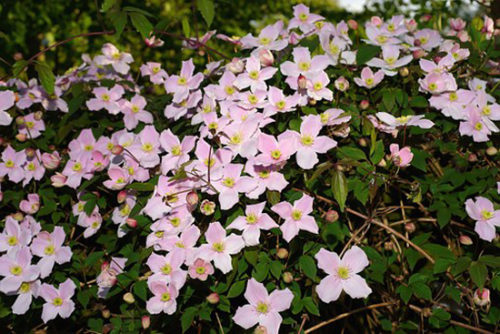
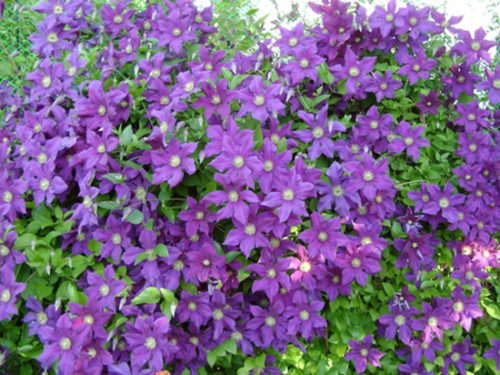
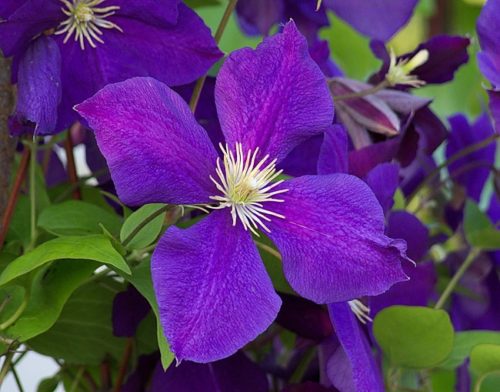
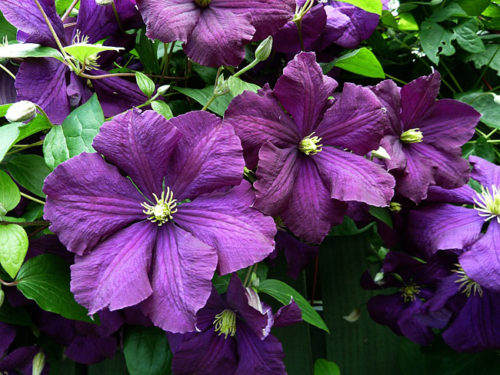
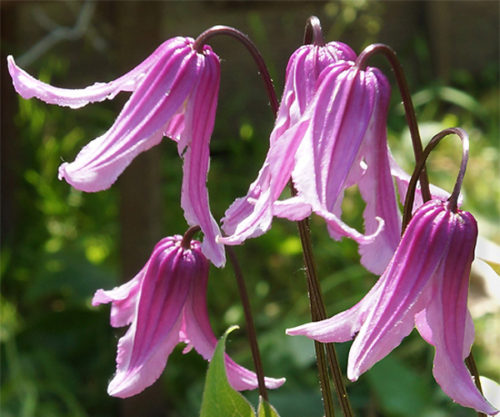
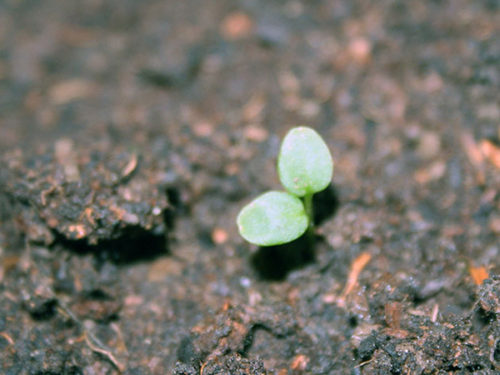
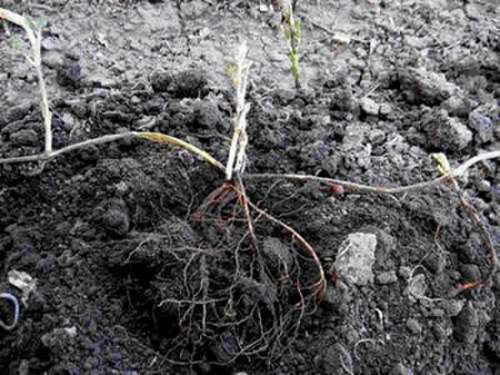
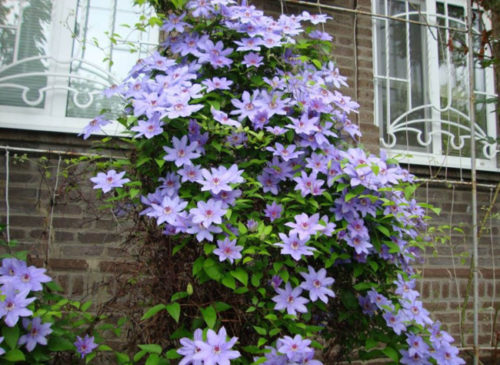
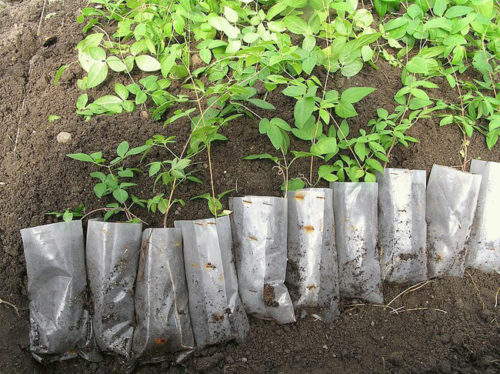
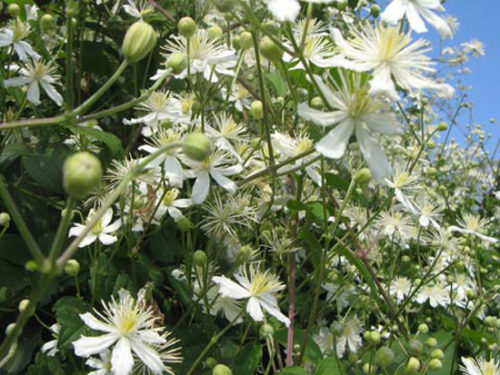
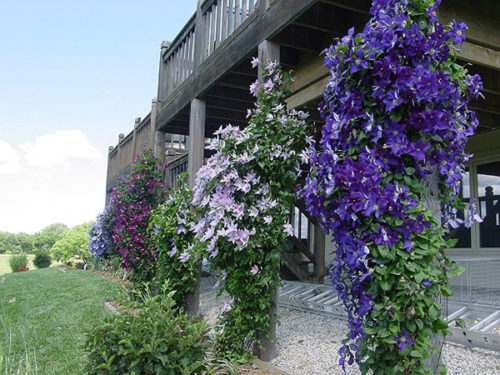
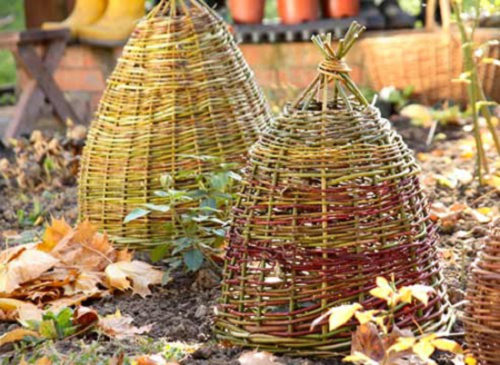












 Start a discussion ...
Start a discussion ...